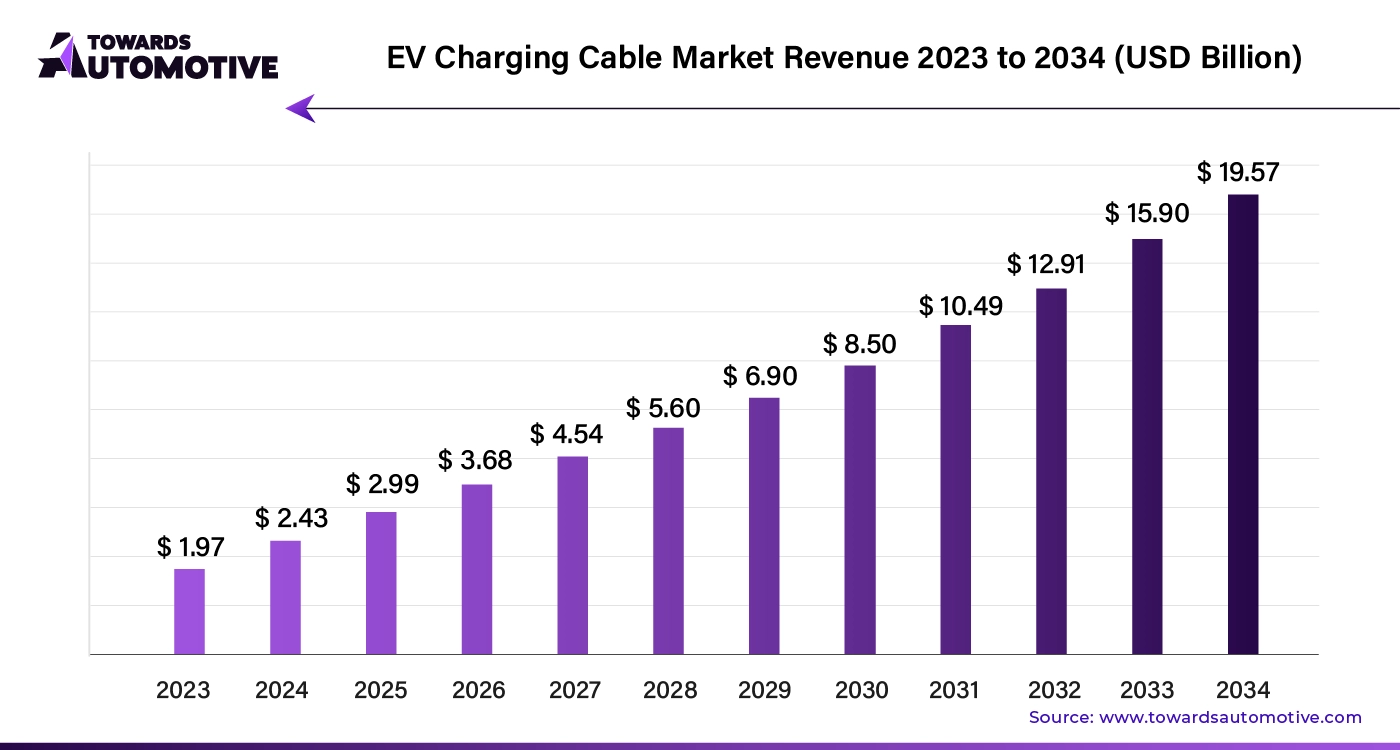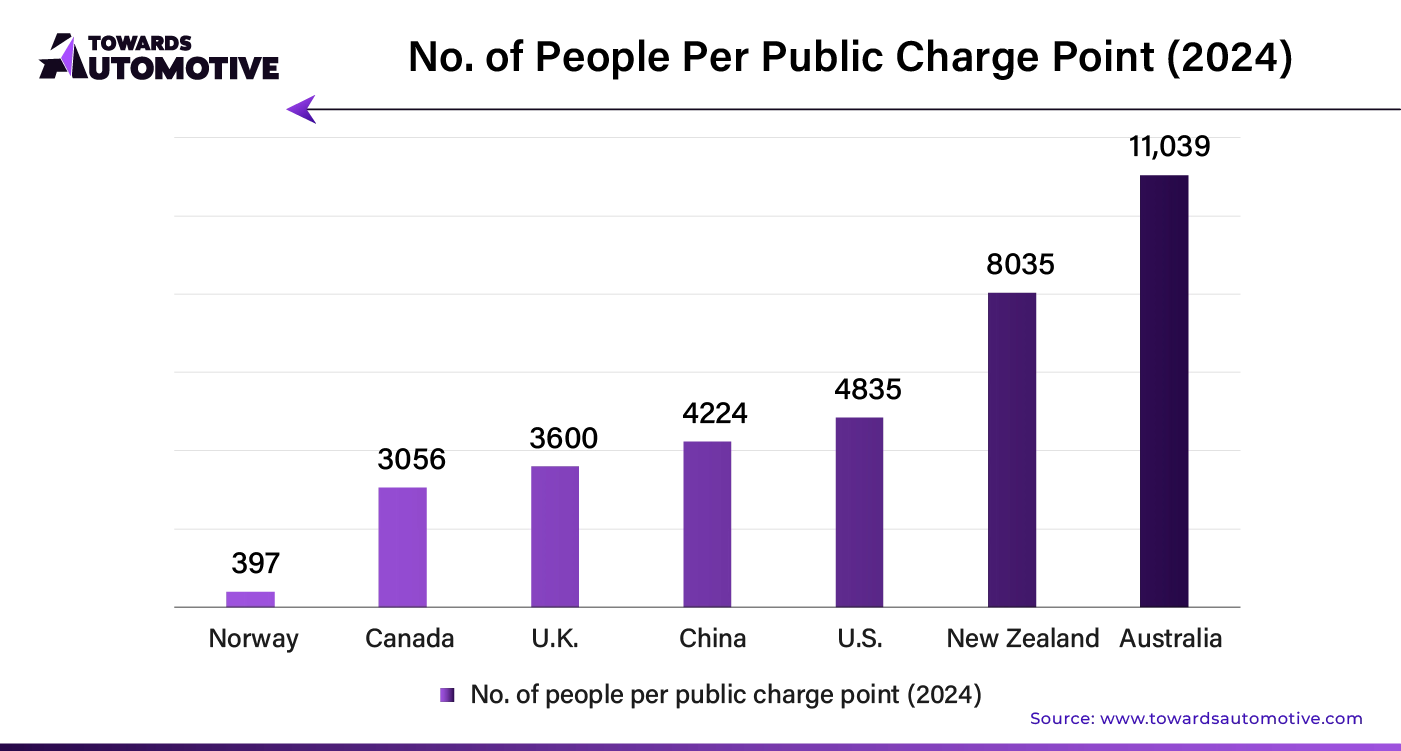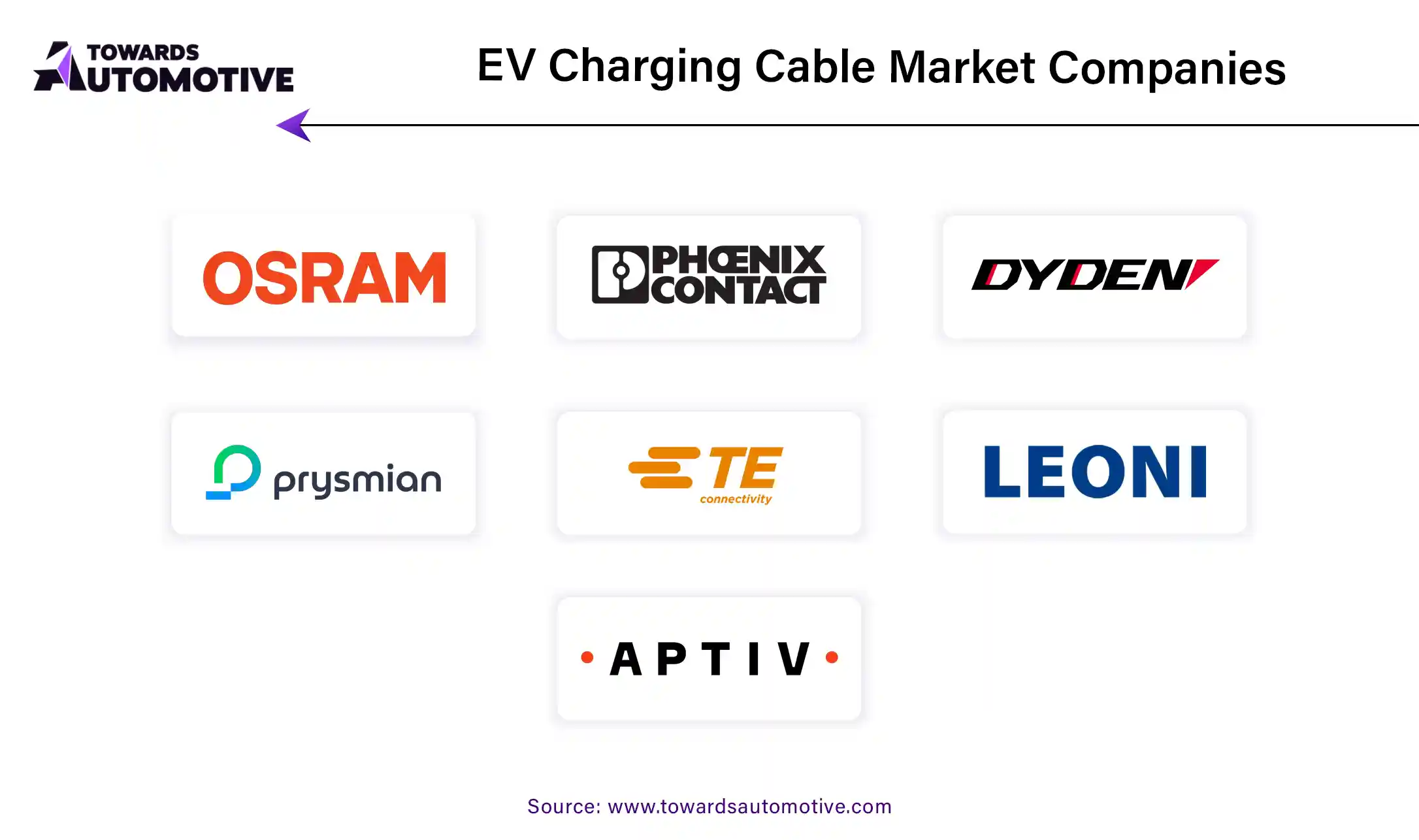March 2025
The global EV charging cable market is projected to reach USD 19.57 billion by 2034, expanding from USD 2.99 billion in 2025, at an annual growth rate of 23.10% during the forecast period from 2025 to 2034.

Unlock Infinite Advantages: Subscribe to Annual Membership
As sustainability becomes a top priority for governments and consumers alike, the adoption of electric vehicles (EVs) is gaining momentum worldwide. This surge in EV use is driving an equally robust demand for EV charging cables, a critical component in the electric vehicle ecosystem.
Governments around the world are implementing policies and incentives to make the transition to electric vehicles more accessible and appealing. These efforts, aimed at reducing carbon emissions and promoting clean energy, are paving the way for a significant expansion in the EV market. As a result, the demand for EV charging cables is increasing in tandem with the growing number of electric vehicles on the road.
EV charging cables are not just in demand; they are evolving to meet the needs of modern consumers. The market is seeing a notable shift towards cables with rapid and extra-fast charging capabilities. These advanced cables are becoming a key selling point, as they offer quicker charging times, which is a critical factor for EV owners looking to maximize convenience and efficiency.
Moreover, the expansion of EV charging infrastructure is proving to be a significant boon for the EV charging cable market. As more charging stations are built to accommodate the rising number of electric vehicles, the need for reliable and efficient charging cables grows accordingly. This infrastructure development is creating a ripple effect, further boosting the demand for EV charging cables.
Manufacturers are responding to this increased demand by innovating and improving their products. One area of focus is the integration of inherent cooling systems into charging cables. This feature addresses a common consumer concern: the tendency for charging cables to heat up quickly during use. By incorporating cooling mechanisms, manufacturers are enhancing the safety and performance of their products, aligning with consumer preferences and ensuring that their cables can withstand the rigors of rapid charging. The automotive market valued at USD 4,070.19 billion in 2023, is experiencing growth and is projected to surpass USD 6,678.28 billion by 2032, with a significant CAGR of over 5.66%.
As electric vehicles (EVs) become increasingly popular, a significant trend has emerged: drivers prefer the convenience of charging their vehicles at home. In response, manufacturers are focusing on designing and producing charging cables that are not only easy to use but also compatible with a wide variety of electrical sockets. This innovation aims to simplify the charging process for consumers, making it more accessible and user-friendly.
Governments worldwide are playing a crucial role in supporting the growth of the EV market. Through legislation and incentives, they are encouraging the local production of EV charging equipment. This has created favorable conditions for manufacturers to expand their operations and meet the rising demand. For instance, government policies that reduce import duties and taxes on electric vehicles have made them more affordable, leading to an increase in EV ownership. As more people buy electric vehicles, the demand for charging cables naturally rises.
Technological advancements are also driving growth in the EV charging cable market. Features like temperature sensors and secure locking mechanisms are becoming increasingly important, as they enhance safety and usability. These innovations are not only meeting current consumer demands but are also accelerating the adoption of EVs by making charging more reliable and secure.
The market is further expanding as new types of electric vehicles, such as electric jeeps and pickup trucks, gain popularity. These vehicles, which require specialized charging solutions, are broadening the scope of the market and creating new opportunities for manufacturers.
However, the high cost of installing EV charging infrastructure remains a challenge. This expense has tempered the market’s growth to some extent, as it can be a barrier for widespread adoption. Despite this, the overall outlook for the EV charging cable market remains positive, driven by consumer demand, technological innovation, and supportive government policies.
Overall, the global EV charging cable market is on a promising trajectory, shaped by consumer preferences, technological advancements, and government support. As the market continues to evolve, manufacturers are well-positioned to capitalize on these trends and meet the growing demand for electric vehicle charging solutions.
Artificial Intelligence (AI) is transforming the electric vehicle (EV) charging cable market by significantly boosting growth and efficiency. AI algorithms enhance the charging experience by optimizing energy distribution, predicting maintenance needs, and improving safety protocols. These intelligent systems analyze real-time data from charging stations to adjust power delivery, ensuring vehicles charge faster and more efficiently. AI also aids in demand forecasting, helping manufacturers anticipate market trends and manage supply chains effectively.
Additionally, AI-powered charging solutions provide users with detailed insights into their energy consumption and offer personalized recommendations for reducing costs. Advanced AI technologies facilitate seamless integration with smart grids, enabling better management of energy resources and supporting the transition to renewable energy sources. This integration helps to create a more sustainable charging infrastructure and meets the growing demand for electric vehicles.
By harnessing AI, the EV charging cable market not only accelerates its growth but also enhances overall user experience, safety, and energy efficiency. As AI continues to evolve, it will play a crucial role in shaping the future of EV charging infrastructure.
In the electric vehicle (EV) charging cable market, the supply chain is crucial for meeting growing demand and ensuring reliable delivery. It starts with raw materials, including copper, plastic, and rubber, sourced from various suppliers. Manufacturers then transform these materials into high-quality charging cables, adhering to stringent safety and performance standards.
The production process involves several stages: design, component sourcing, assembly, and quality control. Each stage requires careful coordination to maintain efficiency and reduce lead times. Once the cables are manufactured, they move to distribution centers where they are stored until needed by retailers or directly by EV charging station operators.
Effective supply chain management ensures that cables are available when and where they are needed, minimizing delays and optimizing inventory levels. Advanced technologies, such as real-time tracking and data analytics, play a key role in improving supply chain visibility and responsiveness. Collaboration among manufacturers, suppliers, and distributors is essential to adapt to market changes and meet the evolving needs of the EV industry.
By streamlining the supply chain, stakeholders can enhance the overall efficiency of the EV charging cable market, supporting the growth of electric vehicles and their infrastructure.
The EV charging cable market ecosystem relies on several key components and contributions from various companies. At its core, the ecosystem includes charging cables, connectors, and adapters that facilitate the connection between electric vehicles (EVs) and charging stations. Charging cables are crucial for transmitting power and data, while connectors ensure compatibility between different EV models and charging standards. Adapters help bridge any gaps between various charging protocols.
Manufacturers play a significant role in this market. Companies like TESLA and ChargePoint focus on producing high-quality, durable cables that can withstand the demands of frequent use. They also innovate in cable design to improve charging speed and efficiency. On the other hand, companies like Siemens and ABB contribute by developing advanced charging infrastructure, including smart chargers that integrate with home and public charging networks.
Moreover, companies specializing in cable insulation and protection, such as Prysmian Group and Nexans, provide essential materials that ensure cables are safe and reliable. Together, these contributions form a comprehensive ecosystem that supports the growing adoption of electric vehicles and the expansion of EV charging infrastructure worldwide.
As the adoption of electric vehicles (EVs) accelerates, the market for EV charging cables is undergoing notable changes, particularly in terms of preferred power supply and charging speeds. In 2024, alternating current (AC) is expected to dominate the EV charging cable market, accounting for approximately 90% of the market share by power supply. Several factors contribute to AC's leading position as the preferred choice for both manufacturers and consumers.
One of the primary reasons for AC's dominance is that the majority of electric vehicles and charging stations are designed with AC power supply as the standard. This has naturally led to a higher demand for AC-compatible charging cables. While direct current (DC) chargers are increasingly being introduced into homes, AC charging remains the norm in residential areas, with consumers showing greater confidence in this familiar technology.
In addition to the preference for AC power, there is a growing demand for fast charging capabilities, particularly in the 7-22 kW range. By 2024, EV charging cables with this fast charging speed are projected to capture about 48% of the market share. This trend is driven by the needs of busy professionals and individuals who prioritize efficiency and convenience.
Cables with charging speeds below 3 kW are losing popularity as consumers shift towards faster options that reduce charging time. Although there are even faster charging solutions available—capable of delivering over 100 kW—the 7-22 kW range is favored by most users for offering a balanced mix of speed and cost-effectiveness.
Government initiatives, coupled with increasing affluence, are significantly driving the adoption of electric vehicles (EVs) and their accessories in North America, particularly EV charging cables. Meanwhile, the Asia Pacific region's focus on accelerating its automotive sector is propelling market growth, and Oceania's commitment to sustainability is bolstering demand for EV charging cables.

United States: Innovation Spurs Growth with a Projected CAGR of 23.8%
The EV charging cable market in the United States is expected to grow at a strong compound annual growth rate (CAGR) of 23.8% in the coming years. This growth is largely fueled by ongoing innovation within the industry. American companies are continuously rolling out new and advanced products to meet evolving consumer demands. For example, in March 2024, itselectric, a local player, introduced the Brooklyn-718 cable, notable for being the first detachable charging cable.
Additionally, government policies are playing a crucial role. The Buy American Act, which requires the domestic manufacturing of most electric vehicle components, is significantly boosting the production of EV charging cables in the country.
Canada: Harsh Climates and Increasing Affluence Boost Market Growth with a 26.2% CAGR
In Canada, the EV charging cable market is expected to expand at a CAGR of 26.2%. This growth is primarily driven by the proven performance of electric vehicles in the country’s extreme cold conditions, which has increased consumer trust in the technology. Moreover, the rising affluence of the Canadian population is reducing cost barriers, making EVs and their accessories, like charging cables, more accessible to a broader audience.
Australia: Sustainability Efforts and Government Support Propel a 27.5% CAGR
Australia is experiencing a surge in demand for EV charging cables, driven by the nation’s increasing focus on sustainability. The market is projected to achieve a CAGR of 27.5%. With the growing frequency of natural disasters linked to climate change, Australians are embracing sustainable living, leading to a rise in the adoption of electric vehicles and, consequently, higher demand for EV charging cables.
Government initiatives, such as the Queensland Electric Super Highway project, which aims to increase the number of charging stations across the country, are also contributing to the market's positive outlook.
Japan: Tax Incentives and a Thriving Auto Sector Lead to a 28.7% CAGR
Japan's EV charging cable market is set to grow at a CAGR of 28.7%, driven by a combination of government tax incentives and a robust automotive sector. The Japanese government is planning significant tax breaks for electric vehicles, which is expected to greatly boost market growth.
Additionally, Japan’s strong automobile industry, which is producing electric vehicles at a considerable rate, is driving the demand for EV charging cables.
India: Convenience and Strategic Tax Policies Drive a 34.8% CAGR
India is expected to witness the highest growth in the EV charging cable market, with an anticipated CAGR of 34.8%. Indian consumers have a strong preference for convenience, leading manufacturers to introduce shorter-length cables tailored to the market’s specific needs.
Moreover, the Indian government’s recent initiative to lower import taxes for electric vehicle companies, provided they invest at least US$ 480 million, is expected to further stimulate market growth.
As technology in the electric vehicle (EV) industry rapidly evolves, companies in the EV charging cable market are under constant pressure to keep their product lines up to date. Staying competitive means that continuous investment in research and development (R&D) has become essential, with many companies also seeking public subsidies to support their innovation efforts.
OSRAM Licht AG, a key player in this market, has focused on producing battery cables capable of delivering up to 22 kW of power. This product reflects the company's commitment to meeting the increasing demands for higher power outputs in EV charging. Meanwhile, other companies in the industry are experimenting with different power ranges and charging speeds, aiming to offer a variety of options to suit the diverse needs of EV users.

By Power Supply Type
By Charging Speed
By Mode Type
By Connector Type
By Application
By Cable Length
By Shape
By Region
March 2025
March 2025
March 2025
March 2025
Dr. Arjun Patel is a distinguished expert in the automotive industry, holding advanced degrees in Automotive Engineering and Mechanical Engineering. His expertise spans automotive market dynamics, technological advancements, and sustainable practices. Dr. Patel excels in conducting in depth research and analysis on market trends, consumer preferences, and the economic implications within the automotive sector. He is renowned for his insightful publications on topics such as electric vehicles, autonomous driving technologies, and the evolution of sustainable transportation solutions. Dr. Patels research contributions have significantly advanced understanding in the field, earning him recognition as a leading authority in automotive research and analysis.
We offer automotive expertise for market projections and customizable research, adaptable to diverse strategic approaches.
Contact Us